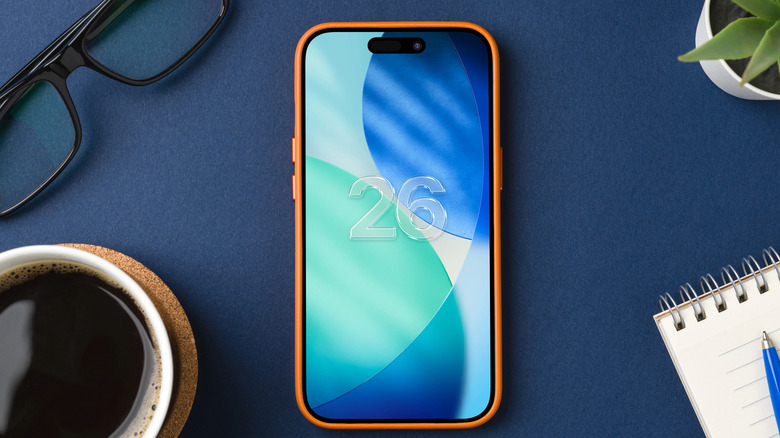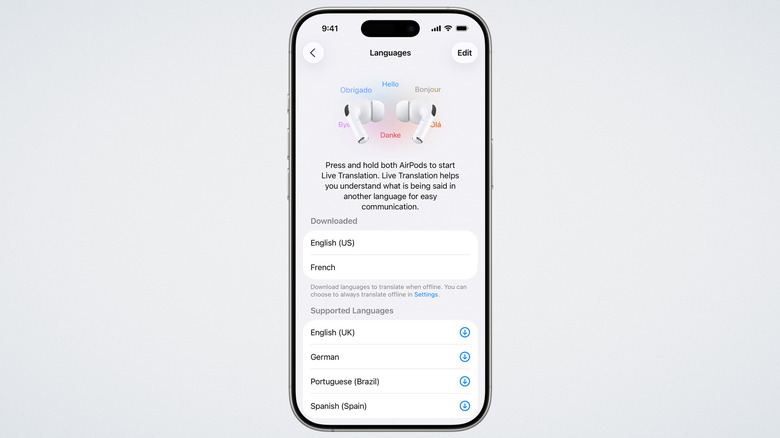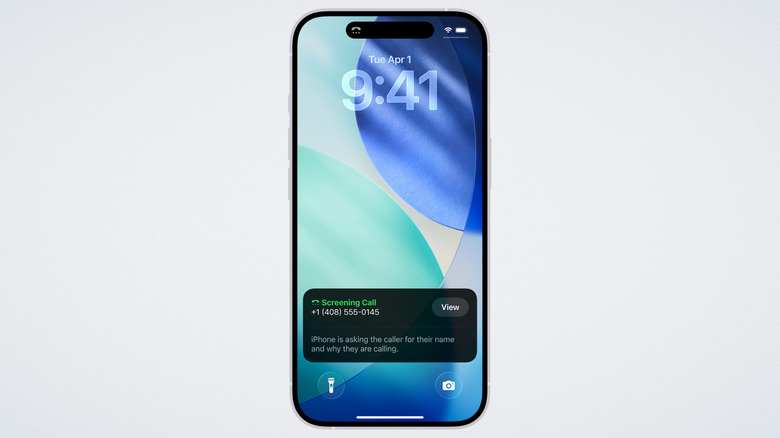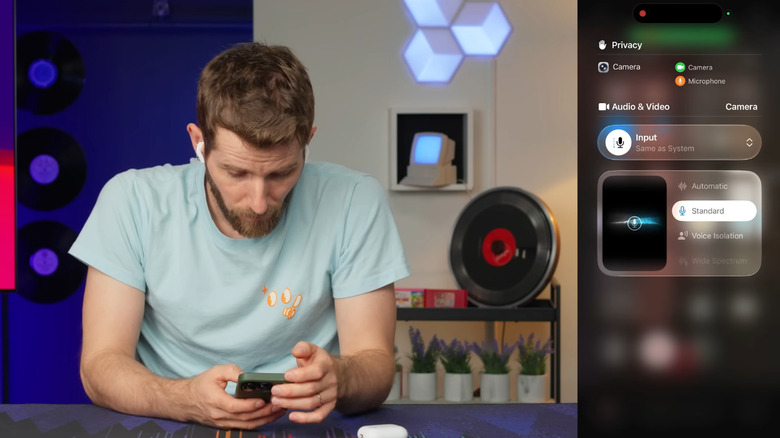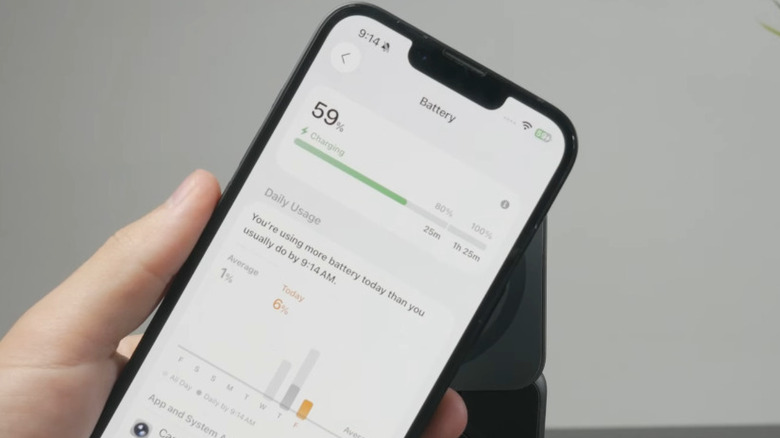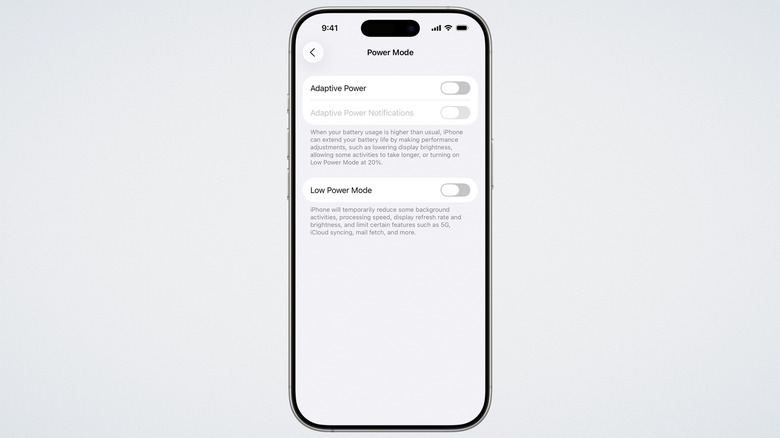5 New iOS 26 Features Android Has Had For Years
It's a classic meme: Apple unveils a new feature, only for Android and Windows users to chuckle and shake their heads, saying, "Silly Apple, we've been able to do that for a decade already!" A perfect example of this is the calculator app, one of the features that the iPad took a shockingly long time to get. To be fair, there are features Android users are missing out on, but that's usually the exception. Apple is often late to the party. Once again, it's been late with multiple features that debuted in iOS 26.
We're looking at five iOS features that are brand-new to iPhone and old hat for the Android realm. To keep things simple, we're not necessarily going to look at when these features first appeared on Android. Rather, we'll focus (in most cases) on the Google Pixel lineup, since it's a popular brand of smartphones that typically debuts the most cutting-edge features. Apple users, buckle up, because this is going to hurt. Android users, kick back and relax, because you have full permission to gloat.
Translate conversations
To be fair to Apple, when they do show up to the party, they show up with a supernova. iOS 26 revealed a comprehensive translation toolset for almost any situation where you don't speak your interlocutor's language. Multilingual text conversations in the Messages app get seamless, automatic translation; FaceTime calls get live captions; Phone calls capture both voices and then spit out a translated voice on the fly, complete with live transcriptions. This all crescendos with the person-to-person conversation translation feature, which allows two AirPods users speaking different language languages to converse like it's 2050.
Except, you guessed it, Android has been riding this pony for a while. Smugly so, now that Apple's showing off its new translation toolset as if it was the first to do so. Back in 2021, the Pixel 6 could live-caption audio in another language, be that a YouTube video or a live conversation, like a video call. Multilingual chats in Google Messages could also be translated automatically, and third-party apps like Telegram could do that, too. Google Pixel Buds could translate conversations live circa 2023. In fact, multiple earbuds could translate languages in real time before iOS 26 was even rumored. The only feature Android released at roughly the same time as iOS is the Voice Translate, and according to some, this implementation is superior to Apple's, since it mimics your voice and speaking patterns.
Credit where credit is due, Apple has made these features incredibly seamless and easy to use, even if they were delayed. However, they are all restricted to Apple apps. Google's live captions, for example, work system-wide. Google still has the edge with things like its Pixel Fold Dual Screen live conversation support, whereas Apple's rumored foldable phone is still only a rumor.
Screen calls and get hold alerts
I purchased the Pixel 6 back when it came out in 2021, and at the time, it was groundbreaking in every way possible. The real showstopper amid all its amazing smart features was its ability to screen calls and hold them for you. This feature even worked on older Pixel models. Dubbed Call Screen, the feature uses Google Assistant to ask the caller who they are and what they want, particularly if it's an unknown number that could possibly be a spam call. It all happens silently, and spits out a transcript so you can see in real time what the person is saying. Coolest of all, it generates responses should you want further information without picking up; My personal favorite was "Report as spam," which tells them to remove you from their list. Once I started using that feature, spam calls were a thing of the past.
Hold For Me was another feature released at that time. It listens in on any call where you've been put on hold and lets you know when the music has stopped and a human being is (likely) talking to you. Even back in 2021 as a new feature, it worked incredibly well and supported devices all the way back to the Pixel 3. It's not perfect; Hold music often includes recorded voices that can confuse the AI, but it's a must-have even today.
Apple's versions of these two things in iOS 26 are Call Screening and Hold Assist. The former works almost identically to Google's implementation, minus the ability to ask for more information with tappable responses. Apple's Hold Assist feature has one leg up over Hold for me in that it can automatically detect when you've been put on hold.
Change the audio input
Anyone who had to take a call with AirPods knows the frustration of sounding to the other person like you're at the other end of a wind tunnel. It would have been a lot easier if you could switch to the phone's microphone with AirPods still in, but you couldn't. Not until iOS 26. Simply drag down the Control Center when in an app or on a website where you're using audio input and change to a different microphone — assuming you have one. You can also change the default input device in Settings > Sounds & Haptics to either "Automatic," such as your connected AirPods, or set it to always be the iPhone microphone regardless of the situation. iOS 26 also allows for high-quality AirPods audio recording. The irony is that the AirPods Pro 3 seems to have mostly fixed the poor microphone quality of its predecessor, but the audio input switcher is still going to be a huge deal for other situations.
Android has allowed users to change the input source for a while, though it was not a system-wide setting. Apps could change the input device only if they supported it. So if your music listening app didn't have an audio input picker, tough luck. Given that you're subject to the whims of your favorite apps, we'd say this is less of an Android feature and more of a possibility.
The most ironic part of it all is that iOS will — for a time — have this basic audio input switching capability when Android does not. Android 16, which should release in December 2025, is the version of Android to finally include a universal input switcher. So Android won the first leg of the race, but Apple won the second.
Get charge time estimates
Another small feature iPhone users have been dying to have for a long, long time is charge time estimates. Pre-iOS 26, when you plugged in an iPhone, you had no idea how long it would take to get to full battery. This wasn't helped by the fact that iPhones have historically had much slower charging than Android flagships. When you've only got a half hour to top up, it really helps to know how much you can squeeze out in that time frame.
Better late than never, though. iOS 26 puts estimated charge times on the home screen and in Settings > Battery. Speaking from personal experience, this feature works incredibly well. It also helps you avoid one of the most common lithium-ion battery mistakes by telling you when you'll charge to 80% (the percentage you should unplug at to preserve your phone's battery) and then from there to 100%.
Android has had this one for more than a decade. No, we're not exaggerating. Charge time estimates showed up in late 2014 with the release of Android 5.0 Lollipop. Here's to hoping Apple finally deigns to let iPhone users see how long they have left until a set alarm goes off; That's another feature we've been dying to have that's been on Android for an eon.
Automatic battery optimization
We've discussed at length why iOS is draining your iPhone's battery and which iPhone settings you can change to extend it. It would be way more convenient, though, if you could flip a switch that has your phone intelligently and aggressively save battery life, no further interaction required. AI is everywhere these days, so why not here? Adaptive Power is Apple's answer. It's important to note that Adaptive Power isn't just aggressively cutting background performance to give you longer battery life. Instead, it tries to determine when you use your phone the least so it can save battery for when you use your phone the most. Further, it does not stand in the way of any apps that require maximum performance, like a video game.
Based on personal experience, Adaptive Power doesn't step in much, if at all. Once you enable it in Settings > Battery > Power Mode, you can also have it notify you anytime it activates. I have had Adaptive Power on since the beginning of the beta for iOS 26, and I've never seen a notification. Not even once. Either I'm not using my phone heavily enough to warrant Adaptive Power (which I doubt), or the feature is keeping a very light foot on the gas.
Meanwhile, Android has been enjoying the alter ego of Adaptive Power — Adaptive Battery — since at least 2018 with Android 9. The feature seems to work a bit differently, instead deprioritizing apps you use less often when you don't typically use them. Both features only engage once they've had enough time to observe your phone usage behavior and determine when and how best to save battery. Of course, both Android and iPhone support low power mode to even more aggressively cut down on battery usage.
